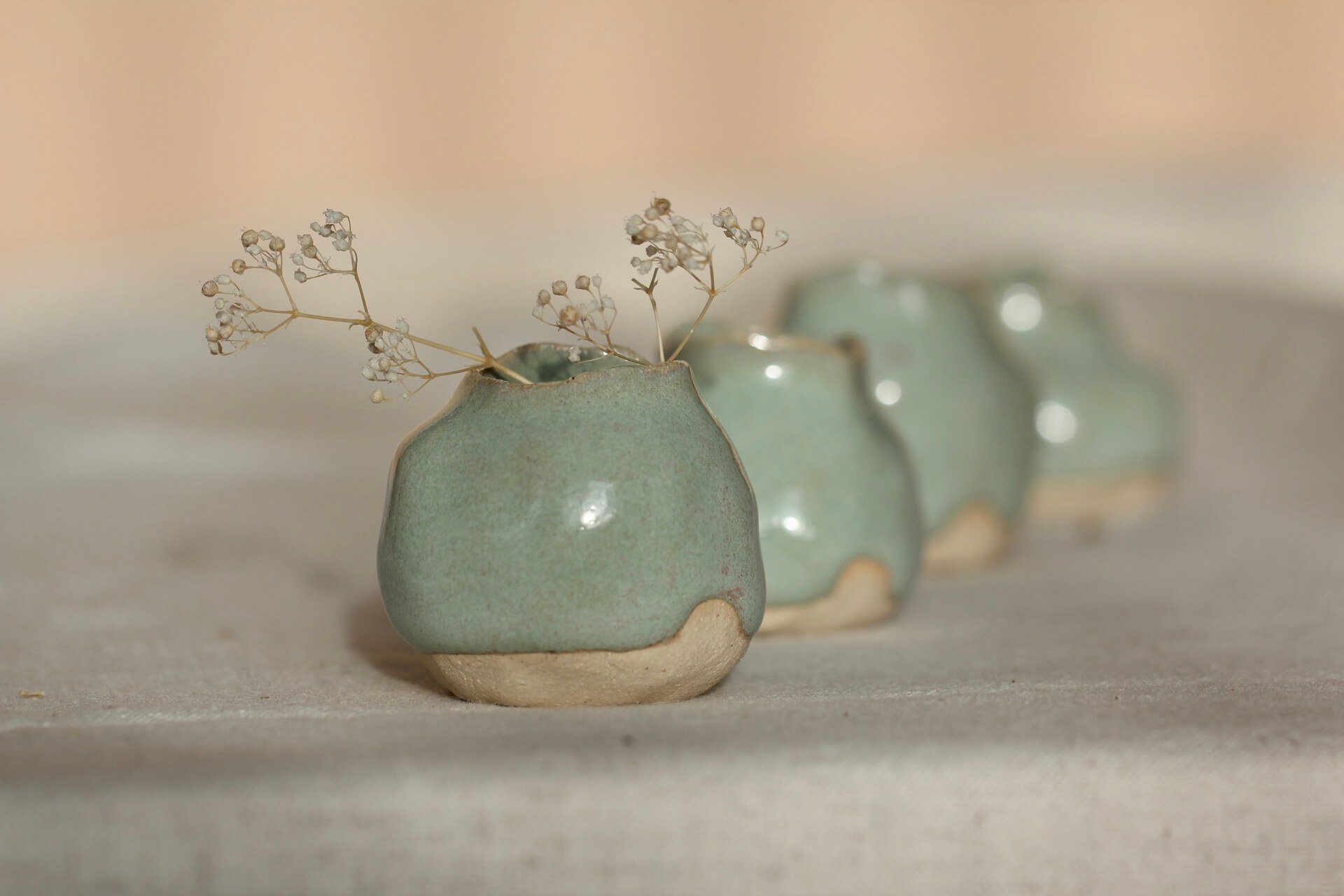
ECO POLICY
Studio Yōki’s commitment to a sustainable Pottery Studio.
Studio Yōki is a small Pottery Studio, creating small batch ceramics, and therefore has a relatively small output. Nonetheless, as a product-based, plant loving business Studio Yōki cares very much about the planet and is committed to the following;
To protect and look after our environment.
To constantly improve my environmental impact.
To be as transparent as possible, allowing you to make informed choices.
To inspire others to do the same.
I do this in a number of different ways;
MATERIALS
The two main materials used in ceramics are clay and glaze.
When making ceramics no clay goes to waste. Any scraps or pots not fit for firing can be reclaimed into usable clay to make new pots.
Any unused glaze can be stored for future use, or recycled (see water).
Bisque and glaze fired clay can be recycled into grog and added back into raw clay to make new pots, or recycled in other ways (see post production).
All glazes used are lead free.
EQUIPMENT/TOOLS
As the most important piece of equipment are my hands, I have little equipment. A lot of my tools were donated to me by my sister, a lot of my tubs for storing anything from clay, to glazes are recycled from my day job in a restaurant or from other makers.
I share a studio with 7 other creatives and between us we share and reuse a lot of each other's tools and equipment. Furthermore I use CAN (Circular Arts Network), a platform where second hand materials and resources can be exchanged.
PACKAGING
All my packaging is plastic free. I recycle what I already have and urge you to reuse and recycle the packaging you receive too!
Any plastic packaging I receive is recycled in the studio from covering a work in progress pot to keep the clay wet and malleable, to storing bone dry clay until it gets reclaimed.
ENERGY
As an individual potter my ceramic output is small. I currently use a second-hand Rohde Ecotop electric kiln to fire all my ceramics. Its insulation makes it one of the most economical kilns currently available. I load my kiln as efficiently as possible, maximising its volume and minimising its usage.
WATER
I don’t have a sink in my studio, and although sometimes this drives me up the wall, it importantly forces me to consider whether I actually need to (or can be bothered to) walk down the corridor to use the sink.
Luckily, handbuilding uses minimal water. When making, I have a bowl of water which gets used throughout the week. I let the clay settle at the bottom and separate the water from it to use again when handbuilding, the clay left behind goes into my reclaim bucket.
Similarly when glazing I use a small amount of water. I use a glaze waste recycling system, where in a similar manner to clay, the glaze is left to settle at the bottom of the water, the water then siphoned off. After a few repetitions of this, the water can be used when mixing up more glaze and the settled glaze can be sieved and used on bisqueware.
Nothing ever goes down the sink, and not just because I’m too lazy to walk down the corridor to put it there.
DELIVERY FOOTPRINT
I have consciously decided not to sell outside the UK, reducing my shipping footprint. You are always more than welcome to pick up your order free from my studio.
POST PRODUCTION
Ceramic products are designed to be durable. Treat them with care and they will last a lifetime. I do, however, appreciate accidents can happen. So here are just a few of the ways you can recycle and reuse your unwanted ceramics.
Unbroken pots can be given to friends or family, or donated to charity.
Broken pots can be used in mosaics, terrarium dressing, can aid drainage in the bottom of plant pots, or you can try your hand at Kintsugi- the Japanese art of putting broken ceramics pieces back together with gold.
LEARNING
In taking an holistic approach to my products lifecycle, I aim to do as much as I can to close the loop of my production and make all aspects of my business as sustainable as possible. If you have any suggestions or have any questions, please get in touch.
If you’d like to learn about sustainable ceramics I suggest starting with ‘Sustainable Ceramics’ by Robert Harrison, and ‘Sustainable Pottery’ or ‘Potters Save The World’ by Yuliya Makliuk.